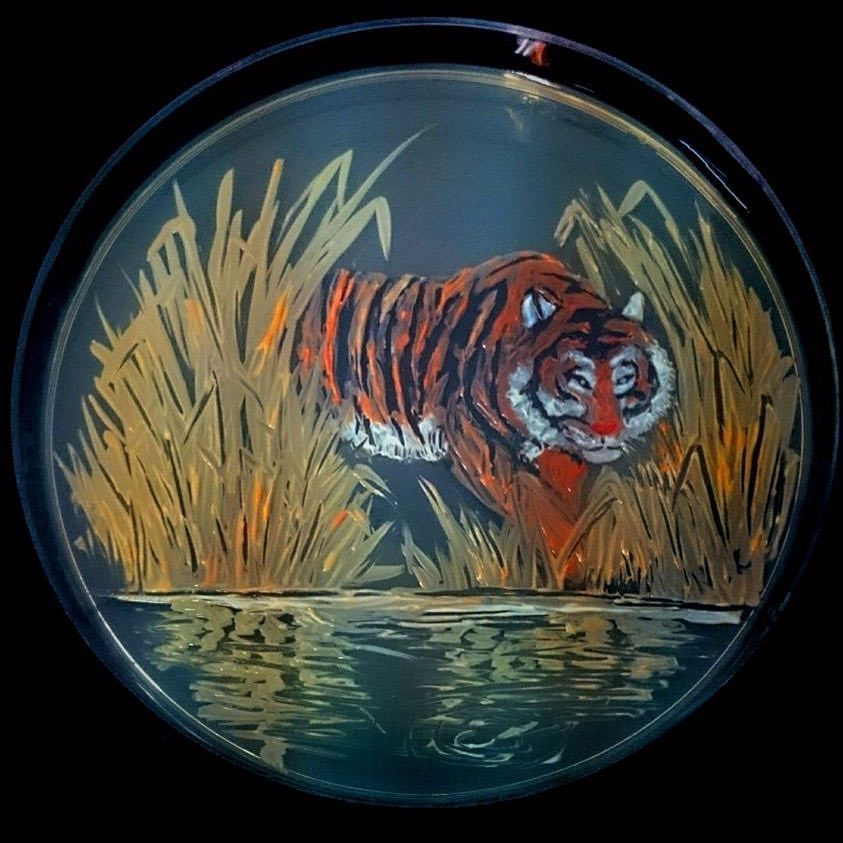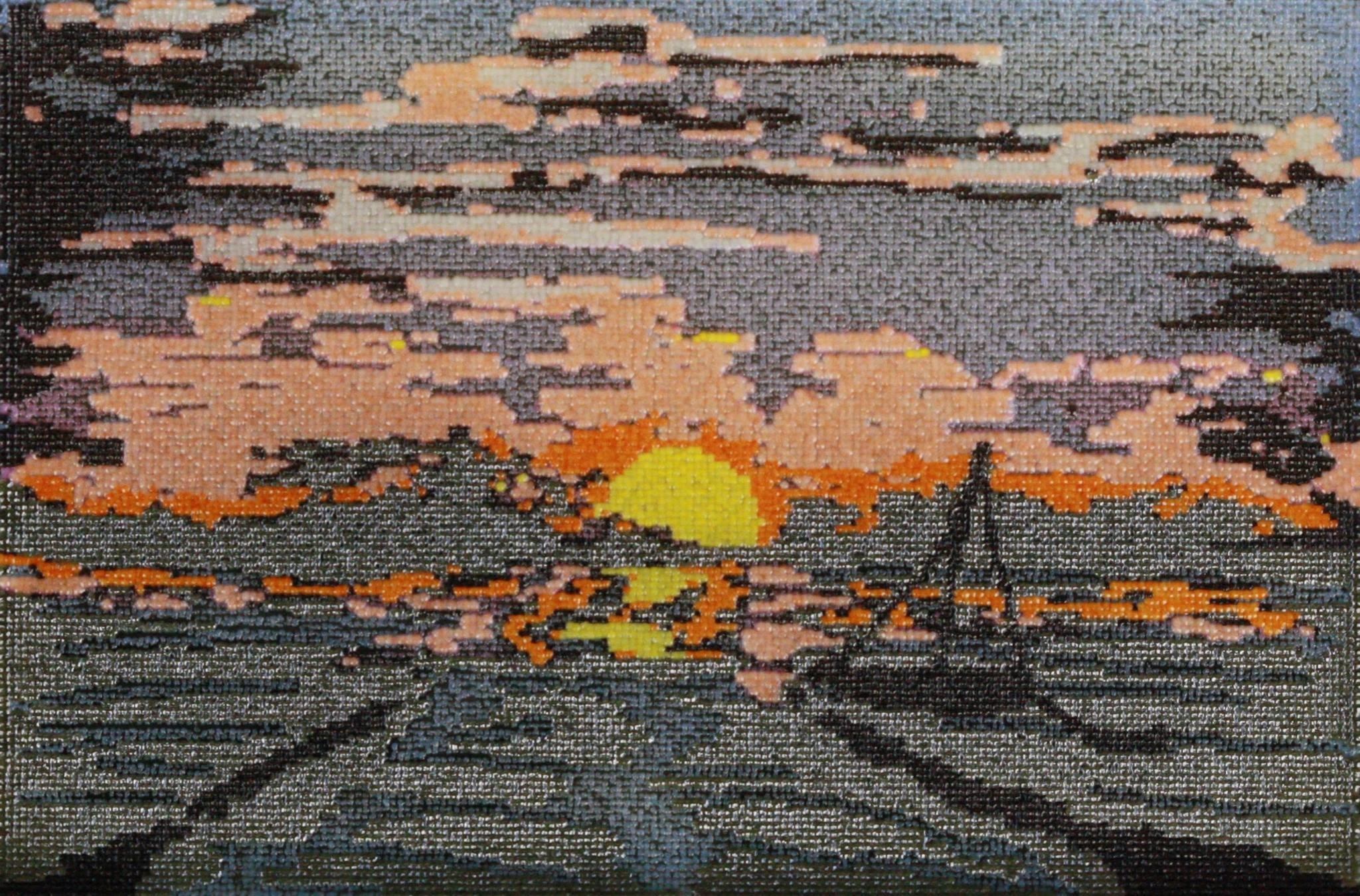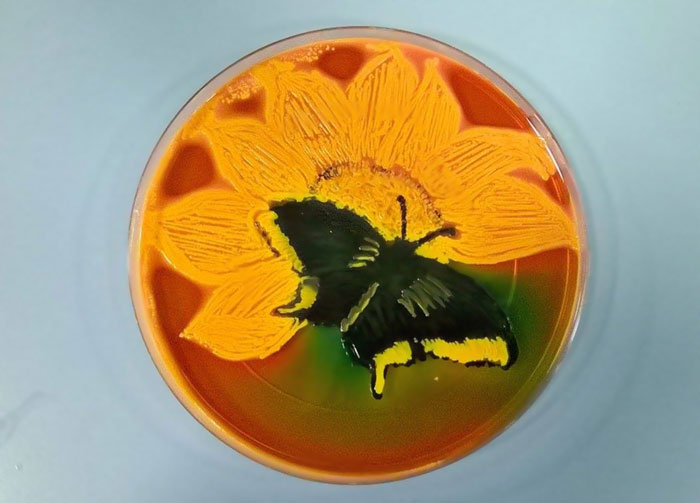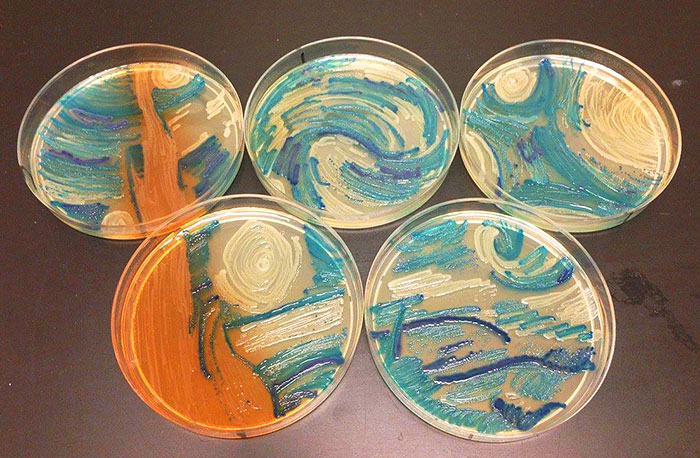The Art: Sunset at the End
The Artist: Unknown
About the Work:
Look closely at Sunset at the End, and you’ll notice that it is made from a series of tiny dots. Perhaps you would think it was a cross-stitch, or even made from beads. You’d be wrong (but forgiven).
Each dot is, in fact, a colony of yeast, and Sunset at the End is not just a work of art, but a celebration of nature’s beauty.
The work has been created through a process dubbed biopointillism. First, a 12cm by 8cm plate was coated in agar, a jelly-like substance used to cultivate bacteria. Then, nanodroplets of baker’s yeast were ‘printed’ onto the plate. Each had been genetically modified to produce a specific colour by infusing them with pigment-encoding plasmids naturally made in other bacteria, fungi, coral, and anemones.
Over several weeks, the yeast colonies grew, and the pigments blossomed, creating a bio-organic work of art.
Biopointillism allows up to 24,576 biopixels to be produced per piece. As such, highly complex creations are possibly through the application of the method, with the only real limitation being the artist’s imagination.
Below are several more examples of agar art from the American Society for Microbiologists, and a listing of the bacteria used in their production:




